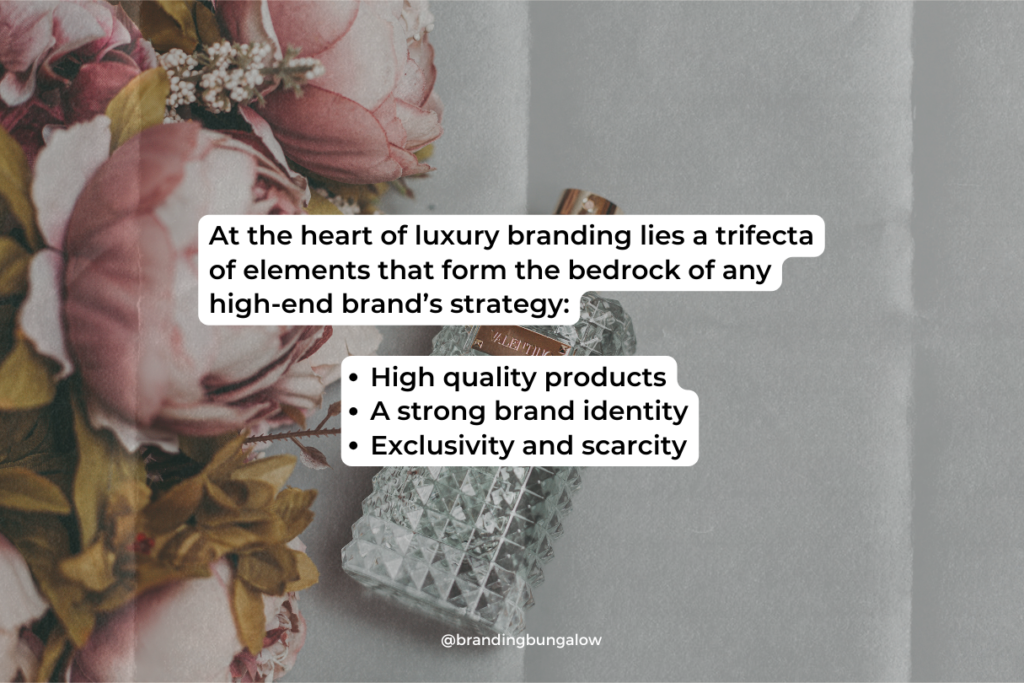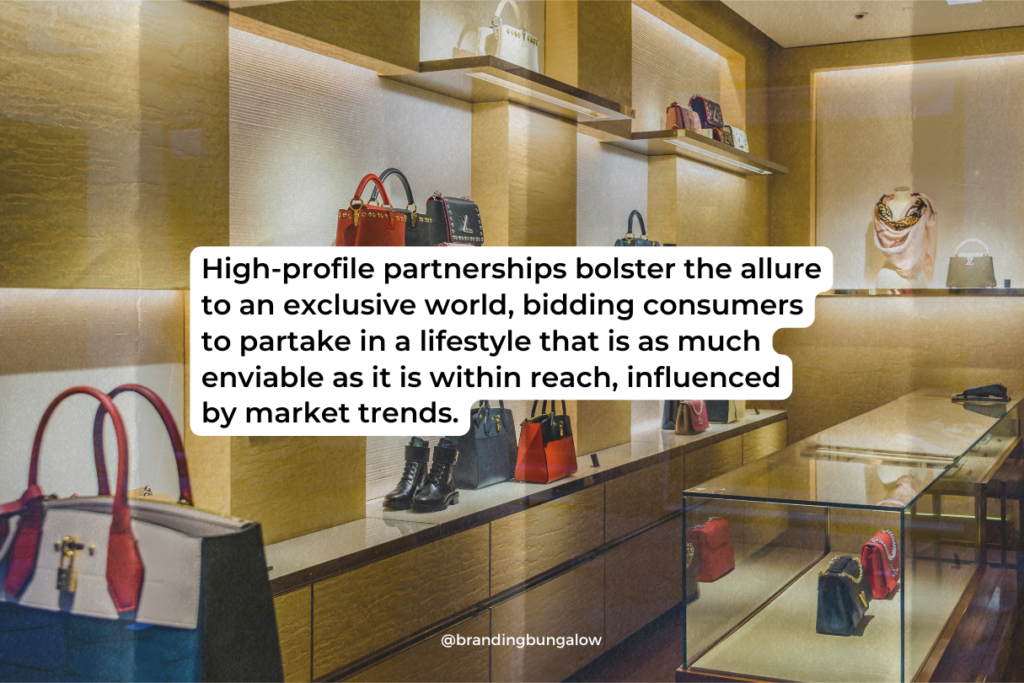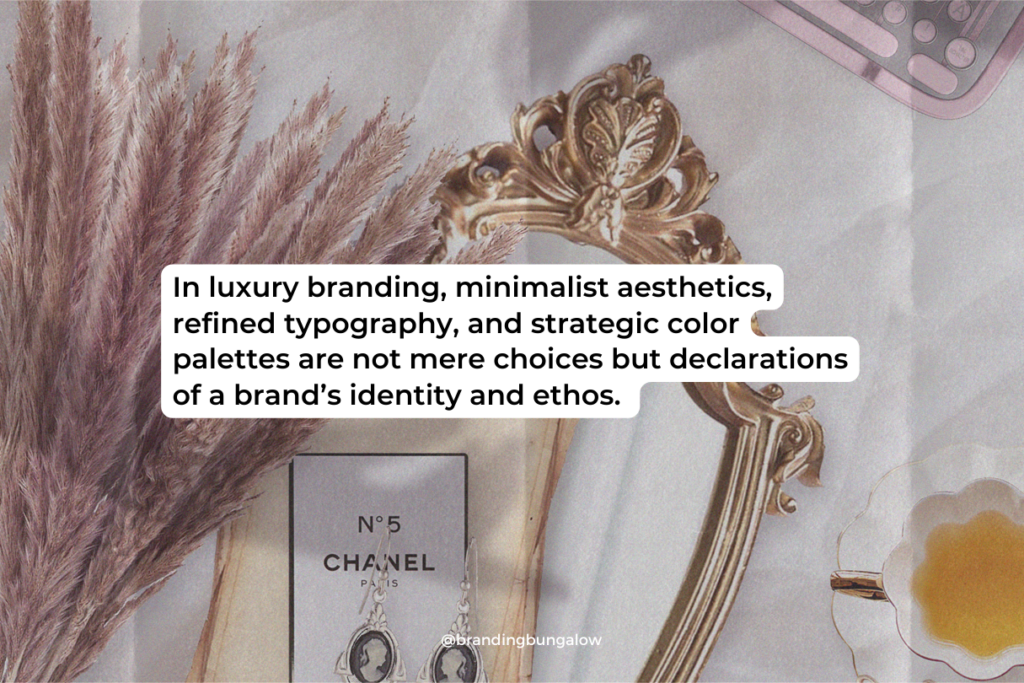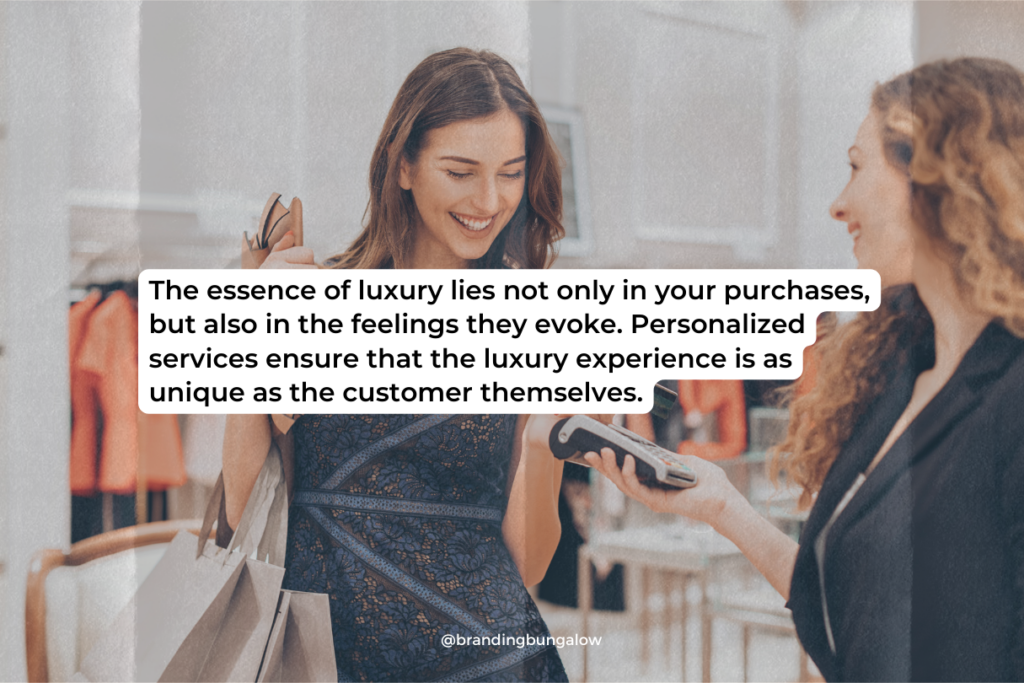Top Trends in Luxury Branding: Elevate Your Brand Identity
Luxury branding creates a prestigious image that sets a brand apart. It’s about combining high-quality products with exclusivity and strong identity. This article explores the top trends in luxury branding and provides insights on how to elevate your brand.
Key Takeaways
- Luxury branding relies on high-quality products, strong brand identity, and exclusivity to create a desirable image and maintain a leading market position.
- Effective luxury branding includes aspirational lifestyle marketing, visually compelling design, and strategic use of storytelling and heritage to connect deeply with consumers.
- Modern luxury brands are adapting to evolving consumer preferences by enhancing their digital presence, prioritizing sustainability and ethics, and promoting inclusivity and diversity.
Key Elements of Luxury Branding

At the heart of luxury branding lies a trifecta of elements that form the bedrock of any high-end brand’s strategy: high-quality products, a strong brand identity, and the siren call of exclusivity. These components work in concert to craft an aura of opulence and status that beckons to those seeking the finest life has to offer. A well-executed brand strategy ensures that these elements are effectively communicated and maintained, solidifying the brand’s position in the market.
Luxury brands transcend the confines of mere product sales, venturing into the realm of dreams, status, and achievement within the luxury market. They morph everyday items, including beauty products, into coveted symbols of success and luxury goods.
High Quality Products
Luxury brands, often considered as high end brand, are synonymous with the finest materials and unparalleled craftsmanship, setting them apart as the pinnacle of quality. These luxury brands are steadfast in their commitment to excellence. Thus, they ensure that every product is a testament to their dedication to perfection.
Louis Vuitton, for instance, is not just a name but a legacy of refined materials and meticulous attention to detail, a standard bearer for luxury.
Strong Brand Identity
A powerful brand identity emerges from crafting stories that strike a chord with the audience at a personal level. Luxury brands like Tiffany & Co. weave narratives of love and romance, fostering intimate connections that transcend the mere act of purchase. Even emerging luxury brands can captivate hearts and minds with compelling positioning, without the need for a storied past.
The essence of luxury branding is a dialogue between brand and consumer, a reflection of desires and aspirations.
Exclusivity and Scarcity
The desirability of a luxury brand is heightened by its aura of exclusivity. It creates an enticing halo around products that are accessible to only a select few. By carefully rationing their creations, high-end brands like Hermès elevate their offerings to the status of rare treasures, coveted by many but held by few. This scarcity is not by chance but by design. It ensures that each piece is as unique as the individual who acquires it.
Crafting an Aspirational Lifestyle

Luxury brands excel at:
- Illustrating a potential life, a canvas filled with deliberate strokes aimed at arousing aspirations and desires
- Belonging to an exclusive world
- Strategic collaborations
- Experiential marketing
- Events that capture the imagination
It’s not just about owning a product. It’s about belonging to an exclusive world, one that is often brought to life through strategic collaborations, experiential marketing, and events that capture the imagination.
High-profile partnerships bolster the allure, bidding consumers to partake in a lifestyle that is as much enviable as it is within reach, influenced by market trends.
Visual Branding
In the luxury sector, visual branding is a practice of elegance and restraint. It plays a crucial role in shaping the brand image. Brands like Rolls-Royce and Hermès employ sleek designs and strategic use of white space to convey a sense of simplicity and sophistication. High-end photography plays a crucial role, capturing the essence of luxury through images that speak of quality and exclusivity.
Storytelling and Heritage
Luxury brands often anchor their narratives in their rich heritage, a tribute to their enduring presence and craftsmanship. Storytelling is not just about the past. It’s a bridge to the present, infusing products with cultural significance and authenticity that resonate with consumers.
Exhibitions like Christian Dior: Designer of Dreams are not mere shows but immersive experiences that bring the brand’s legacy to life.
Celebrity Endorsements
The glittering world of celebrity endorsements adds a layer of credibility and aspiration to luxury brands. When figures like Francis Ford Coppola or Buzz Aldrin lend their image to a brand like Louis Vuitton, they imbue it with their own qualities of success and adventure, creating a magnetic pull towards the brand.
Design Principles for Luxury Brands

In the magical world of luxury branding, carefully curated design principles act as the core ingredients that combine to create a golden result. Minimalist aesthetics, refined typography, and strategic color palettes are not mere choices but declarations of a brand’s identity and ethos. These principles are not just seen. They are felt, conveying a message of sophistication and elegance that resonates with the discerning consumer.
Minimalist Aesthetics
In luxury branding, the minimalist aesthetic is a delicate balance between subtlety and focus. It embodies the philosophy that ‘less is more’. White space, simple yet elegant images, and a clean layout invite the viewer into a world where every detail is intentional and every design choice is a reflection of the brand’s commitment to luxury.
Typography and Logos
A luxury brand’s typographic choices hold as much significance as the garments it designs or the jewels it fashions. Elegant typefaces, used consistently across branding materials, contribute to a strong visual identity that stands the test of time.
Color Palette and Patterns
In the realm of luxury branding, color emerges as a potent narrator. Chanel’s iconic use of black, white, and gold is not random. It is a deliberate choice that embodies the brand’s elegance and sophistication. Similarly, the monogram patterns of Louis Vuitton are not just decorative. They are symbols of heritage and luxury that are recognized worldwide.
Creating a Luxurious Customer Experience

Luxury brands comprehend that opulence extends beyond their products and manifests in the experiences they curate. From bespoke services to exclusive environments, every touchpoint is an opportunity to deepen the customer’s connection with the brand, transforming a transaction into a memorable journey.
Exclusive Store Experiences
Stepping into a luxury store is akin to entering a sanctuary of style and service. Personalized shopping experiences, tailored to individual preferences, make each visit a special event, fostering a sense of kinship between the customer and the brand.
Premium Packaging
Unboxing a luxury product becomes a ritual, a moment where the packaging communicates as articulately as the enclosed item. Premium packaging, with its fine materials and minimalist design, is an extension of the brand’s values and a physical representation of its commitment to excellence.
Personalized Services
The essence of luxury lies not only in your purchases, but also in the feelings they evoke. Personalized services, from shopper guidance to loyalty programs, ensure that the luxury experience is as unique as the customer themselves.
Successful Examples of Luxury Branding
The echelons of luxury fashion brands are filled with illustrious names that have become bywords for sophistication and style. Brands like Louis Vuitton, Chanel, and Rolls-Royce have transcended the boundaries of success to become industry icons, each boasting its unique triumph tale.
Louis Vuitton: Iconic Designs
Louis Vuitton’s signature designs are not just instantly recognizable; they are emblematic of luxury itself. The brand’s success lies in its ability to stay relevant, blending tradition with modernity, heritage with innovation.
Chanel: Consistent Color Palette
Chanel’s mastery of color is a lesson in branding. The consistent use of black, white, and gold is a visual language that communicates the brand’s identity, ensuring that each product is unmistakably Chanel.
Rolls-Royce: High-End Imagery
Rolls-Royce transforms the automobile into a work of art through its use of high-end imagery. The brand’s sleek web design and stunning photography create an aspirational world where luxury is not just a product but a promise.
Adapting Luxury Branding for Modern Consumers

In the dynamic world we inhabit, luxury brands are far from static. Instead, they adapt and embrace digital innovation, sustainability, and inclusivity to cater to the evolving preferences of modern consumers.
Digital Presence
In today’s digital era, maintaining a strong online presence is indispensable for luxury brands. Engaging with tech-savvy consumers through social media, influencer collaborations, and personalized digital campaigns is essential to stay relevant and accessible.
Sustainability and Ethics
Sustainability and ethics represent more than mere buzzwords. They have become necessities for brands aiming to connect with a new generation of consumers who prioritize transparency and responsibility.
Inclusivity and Diversity
The embrace of inclusivity and diversity is a powerful statement for luxury brands, signaling a commitment to reflect and celebrate the varied tapestry of their audience.
Summary
As we draw the curtains on this exploration of luxury branding, it is clear that the brands that stand the test of time are those that are able to craft a narrative of exclusivity while staying true to a tradition of excellence. It is a delicate balance of heritage and innovation, of creating a world that is as aspirational as it is accessible. Let these insights inspire you to weave your own tale of luxury, one that will resonate with the hearts and minds of your audience.
Frequently Asked Questions
What are the key elements of luxury branding?
The key elements of luxury branding are high-quality products, strong brand identity, and exclusivity and scarcity, working together to create an aura of opulence and status. These elements are crucial for a successful luxury brand.
How do luxury brands create an aspirational lifestyle?
Luxury brands create an aspirational lifestyle through visual branding, storytelling, heritage, and celebrity endorsements that embody the lifestyle their audience desires.
Why is minimalist design important for luxury brands?
Minimalist design is important for luxury brands because it conveys elegance and sophistication, using white space and simple, elegant images to highlight the brand’s commitment to luxury.
How do luxury brands maintain relevance with modern consumers?
Luxury brands stay relevant with modern consumers by prioritizing digital-first strategies, sustainability, ethics, and inclusivity and diversity, meeting the evolving demands of today’s consumer market.
Can you give examples of successful luxury branding?
Certainly! Louis Vuitton’s iconic designs, Chanel’s consistent color palette, and Rolls-Royce’s high-end imagery are great examples of successful luxury branding. These elements contribute to a strong and recognizable brand identity.
Recent Blog Entries
Discounts to Dubsado CRM, Helcim Payment Processing and...
Brand audits can save your business' sinking marketing ship.
What's happening to Coke and what you can learn from it.
Shop Products
Create a personalize brand board by taking elements from our 3 signature brand board templates.